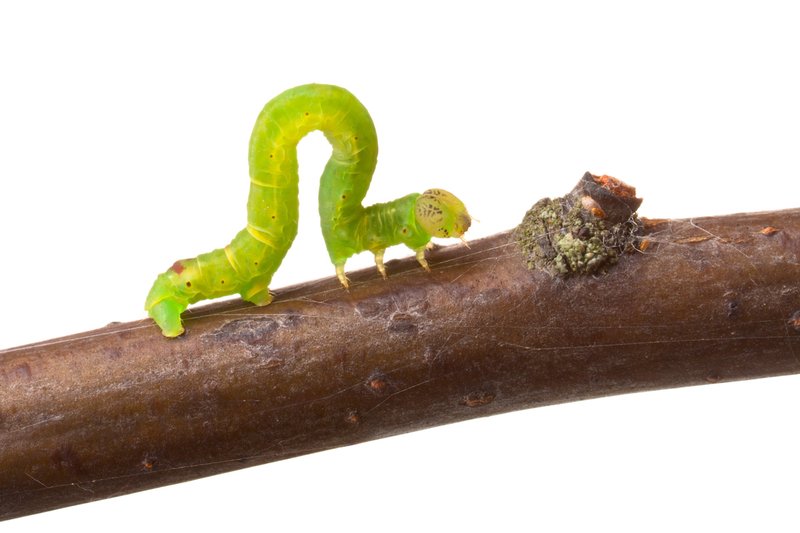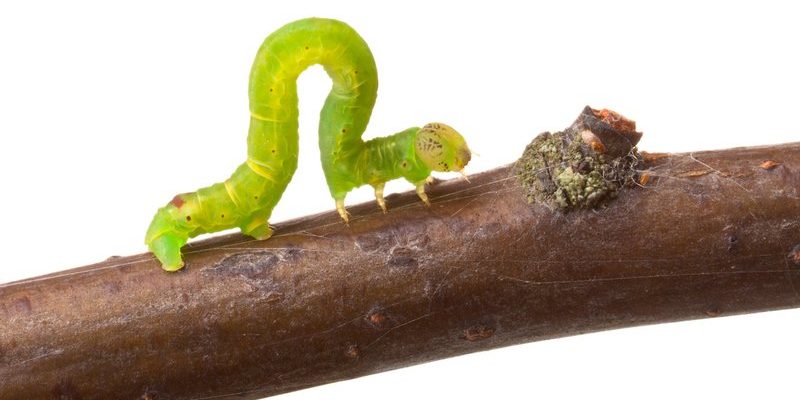
You might be wondering, why should we care about inchworms and their predators? Well, it all comes down to the delicate balance in a forest ecosystem. Just like in a game of tug-of-war, when one end gets too heavy, the other side needs to pull back. In this case, when inchworms thrive without a natural check, they can harm the trees and plants we appreciate. So, let’s dive deeper into the wild world of inchworm predators and learn how they contribute to the health of our forests.
The Role of Predators in Forest Ecosystems
To understand the significance of inchworm predators, it’s essential to grasp the role predators play in ecosystems. Think of a forest as a giant jigsaw puzzle, where every piece has a purpose. Predators are like the skilled artists who make sure each piece fits perfectly. They control population sizes, prevent overgrazing, and even promote biodiversity by allowing different species to thrive.
When it comes to inchworms, their existence can lead to a surge in plant consumption. If left unchecked, they could lead to deforestation and habitat depletion. This is where the predators come in, assuring that inchworms don’t take over the show. Natural predators vary from birds to insects, all playing a role in maintaining the ecological balance.
Types of Predators
In the great outdoors, various creatures fancy an inchworm for dinner. Here’s a closer look at some of the most common inchworm predators:
- Birds: Many birds, especially warblers and chickadees, have a keen eye for spotting inchworms. They deftly pick them off branches and foliage, keeping their numbers down.
- Insects: Certain predatory insects, like lacewings and wasps, also target inchworms. They can be excellent at keeping caterpillar populations in check.
- Small Mammals: In some cases, small mammals such as mice and shrews will munch on inchworms when they are foraging.
By having a diverse range of predators, forests can maintain their balance and health. Each predator plays a specific role that complements the others, ensuring that inchworms don’t dominate the landscape.
Birds: The Feathered Guardians
Birds are often the most visible and relatable predators of inchworms. Picture a busy forest scene where a beautiful warbler flits between branches, its sharp eyes scanning for any inchworm in sight. Warblers, chickadees, and even woodpeckers take advantage of the inchworm’s slow movements. They pluck these green intruders from their leafy perches, effectively managing their populations.
Here’s the thing: the relationship between birds and inchworms isn’t just about survival; it also underscores the importance of biodiversity. When a forest has a variety of bird species, it means the ecosystem is healthy and robust. Each bird has its preferred food source and method of hunting, which means a wider range of inchworms can be controlled.
Beyond being mere consumers, birds also serve as indicators of ecological health. If birds are flourishing, it’s a good sign that their food – including inchworms – is well-regulated.
Insect Predators: Tiny But Mighty
While birds may get the spotlight, let’s not forget the often-overlooked insect predators. Lacewings, for instance, are tiny creatures that can have a massive impact on inchworm populations. They don’t just drop by for a snack; lacewing larvae are voracious eaters. They hunt inchworms and other caterpillars, ensuring that these munching machines don’t wreak havoc on trees.
Wasps are another formidable foe for inchworms. Certain species lay their eggs within or on the inchworms. When the larvae hatch, they gradually consume the host, effectively leading to its demise. While this might sound a bit gruesome, it’s a natural part of the circle of life, keeping balance in the forest.
These insect predators play vital roles that often go unnoticed, but they are essential for keeping inchworm populations managed.
Small Mammals: The Ground Fighters
Walking through the forest floor, you might not realize that inchworm predators are lurking at ground level. Small mammals like mice or shrews often dine on these caterpillars during their quest for food. While they primarily forage for seeds and insects, inchworms can also find their way onto their menu.
These small mammals, though not the main line of defense against inchworms, contribute to controlling their population. When these critters are active, they help sift through the leaf litter and consume any inchworms they find. This creates a multi-layered approach to maintaining the balance of life in the forest.
While you might not see these animals as frequently as birds, their role is just as crucial. Healthy populations of small mammals can be a sign of a balanced ecosystem.
Environmental Factors Influencing Predator Relationships
Now that we’ve explored the various inchworm predators, it’s important to recognize that their relationships can shift due to environmental factors. Changes in weather, habitat destruction, or the introduction of new species can all affect how predators and inchworms interact.
For instance, if a forest undergoes deforestation, bird populations might decline because their habitats are destroyed. This can lead to an unchecked inchworm population, which might, in turn, affect tree health. On the flip side, a healthy forest promotes diverse ecosystems where inchworms and their predators can thrive together.
Climate change also alters habitats and can disrupt traditional predator-prey relationships. For instance, warmer temperatures might allow for certain predators to expand their territory, which could affect local inchworm populations differently.
The Importance of Biodiversity in Predator Dynamics
Biodiversity is essential in ensuring that inchworm populations remain in check. The more diverse an ecosystem is, the more resilient it becomes against any potential shifts in predator-prey relationships. Imagine a tightly woven fabric, where every thread reinforces the others; that’s biodiversity for you.
In healthy forests, a variety of predators can work together to control inchworm populations. When one species may not be as effective, others can fill the gap. This dynamic relationship fosters stability and promotes the overall health of the ecosystem.
Moreover, diverse ecosystems are more likely to withstand environmental changes and disturbances. They can adapt to new challenges, ensuring that inchworm populations don’t spiral out of control.
Understanding the natural predators of inchworms in forest ecosystems is like looking through a magnifying glass at nature’s intricate dance. Each predator plays a role, ensuring that inchworms don’t overwhelm their habitats. From birds swooping through the trees to tiny insects lurking in the shadows, these predators contribute to the symbiotic relationships that define forest life.
By appreciating the balance in nature, we can become better stewards of our environment. It’s essential to protect these ecosystems, allowing inchworms and their predators to coexist. After all, a healthy forest is one where every creature—no matter how small—plays a part in the grand scheme of life. So, next time you take a walk in the woods, remember that every inch you take is part of a much larger story.

